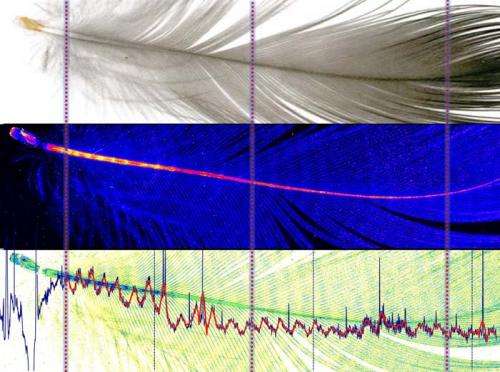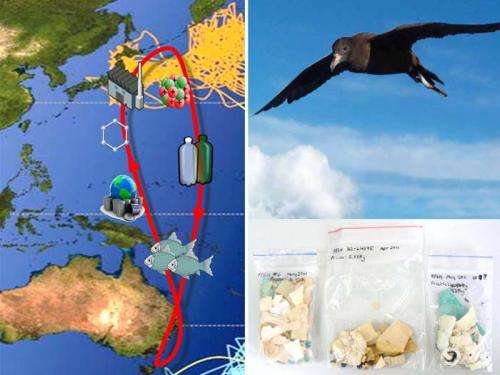The feather samples were imaged using the X-ray fluorescence microspectroscopy beamline at the Australian Synchrotron.
Bird feathers appear to be simplistic structures, but a catalogue of chemicals and environmental contaminants resides deep inside them, scientists report. And these can be used to measure a bird's health.
Researchers at Sydney's nuclear reactor have X-rayed the feathers of migratory birds and identified tree ring-like patterns of trace elements such as zinc and bromine as well as elevated levels of heavy metals including arsenic.
The research leader, Professor Richard Banati, said migratory birds were ideal to study because they were ''a flying bio-monitor of environment stressors around the globe''.
Until now, scientists had no idea simple feathers with no distinguishing features would hold detailed records of a bird's metabolism.
The regular spacing of the bands along the length of the feathers suggested the chemicals circulated within the animal's body as the feathers grew, which made them ideal biomarkers to assess the health impact of marine pollutants, Professor Banati said.
''In the future we can look at this technique to get a historical record of [a bird's] fertility and diet, and make predictions about its future health and lifespan,'' he said. Professor Banati holds a distinguish research fellowship at the Australian Nuclear Science and Technology Organisation.
A highly conserved previously undescribed regular banding pattern of Zn deposition in the breast feathers of Flesh-footed Shearwater chicks visualised at the Australian Synchrotron.
Using several highly sensitive nuclear technologies, Professor Banati and his team were able to detect minuscule concentrations of contaminants or atomic elements in the breast feathers of several migratory bird species including flesh-footed shearwaters, streaked shearwaters and tube-nosed seabirds.
''It's like detecting a bottle of wine in the volume of Sydney Harbour,'' he said.
An example of a yearly migratory cycle for the Flesh-footed Shearwater demonstrating some of the challenges faced on the way. Seabirds are a potential annual repository of data on the state of the environments they interacts with in the course yearly migrations.
One detection technique bombarded the feathers with neutrons, known as neutron activation analysis, which excited the feather's atoms to give off energy. Those energy emissions were then presented as a spectrum that was used to identify different elements.
''We were primarily interested in contaminants such as cadmium and other trace elements that come from industrial pollution,'' Professor Banati said.
Another technique, X-ray radiation microscopy, performed at ANSTO's synchrotron in Melbourne, was used to measure the distribution of the elements throughout the feathers.
The team, which included researchers from James Cook University and the University of Tasmania, found high concentrations of zinc, a trace element vital for life found in more than 100 enzymes.
''These zinc deposits look like tree rings,'' he said.
Changes in this regular zinc pattern could be used to indicate the bird's health, said Professor Bianti.
The team now plan to look for atomic traces of plastics in birds.
Provided by ANSTO
.jpg)
























